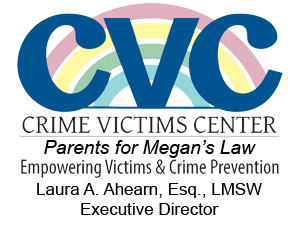EXAMINING THE PREVALENCE OF SEX OFFENDER CLUSTERS
Having moved to Shirley in 2005, former Hampton Bays resident Nancy Peters said she was both surprised and disturbed about the number of convicted sex offenders moving into her neck of the woods. She's not alone in her concerns about these sex offender clusters, which are popping up throughout Suffolk County according to figures from the New York State Sex Offender Registry. Wherever there are rentals or low-cost housing, you're going to find a higher number of sex offenders, said Laura Ahearn, executive director of Parents for Megan's Law. If you look across Long Island, you'll see that is the case, traditionally.
Between May and November of this year, Peters found that 20 sex offenders, seven of whom were listed as level three, the worst offenders, moved into the area. Of the 715 sex offenders residing in Suffolk County, 68 are located in Coram alone, and 54 are registered as living in Bay Shore. Seventeen are listed on the registry as living in Shirley, while 15 sex offenders are residing in Mastic and 23 live in Mastic Beach. Southampton and East Hampton are listed as having four registered sex offenders and the hamlets Southold and Sag Harbor each have two.
Stating that sex offenders have the highest rate of recidivism when compared to any other violent felon released into the community, Ahearn concurred that these clusters are problematic for communities. As for what can be done, Ahearn said state action, coupled with town measures to address zoning codes, can help the situation. We have to have a state law that would require lifetime supervision for all levels of sex offenders, customized for each offender, Ahearn explained. This would help ensure that these offenders are carefully monitored, and help with placement...Zoning changes on the town level are also key, in terms of controlling where they can reside. While the county enacted residency restriction laws in 2006, which prevent sex offenders from living within a quarter-mile of schools, playgrounds, or similar places where children congregate, Ahearn noted that towns must be a part of this process, as well. In Huntington Town, which enacted residency restriction in 2005, the town has passed a measure that prohibits level two and three sex offenders from obtaining an accessory apartment permit for their own home or living in an accessory apartment within the town. Ahearn, who supported the push to prevent sex offenders from getting an accessory apartment permit, said she was wary of not allowing them to reside in accessory apartments. We did not support it because we felt it would have a clustering effect and could put an undo burden on the outskirts of the community, she said. Stating that she has spoken to Brookhaven Town officials about ways in which they can change their zoning laws, Ahearn said she has not heard back on the matter. If you only allowed one sex offender to live in a house that was zoned residential, that would definitely help eliminate the clustering and the overall saturation problem, she said. If a landlord is unable to rent more than 10% of his units, within a one-mile radius [of each other], to sex offenders, that would also help the situation. The state has to take charge, Ahearn said of the ultimate solution to sex offender saturation. If the state enacted lifetime supervision, we'd see much less problems arising on the community level.
(New York)

Comments are closed.